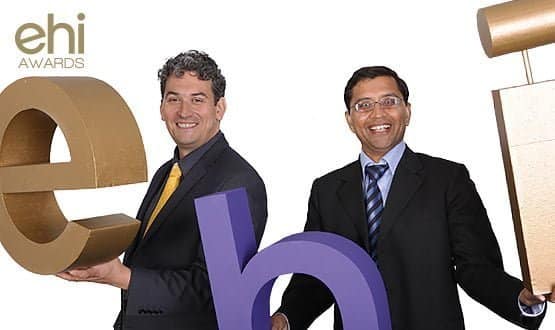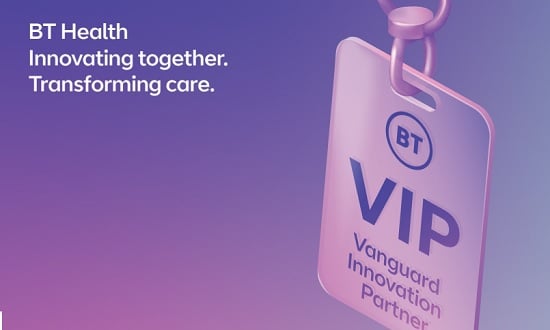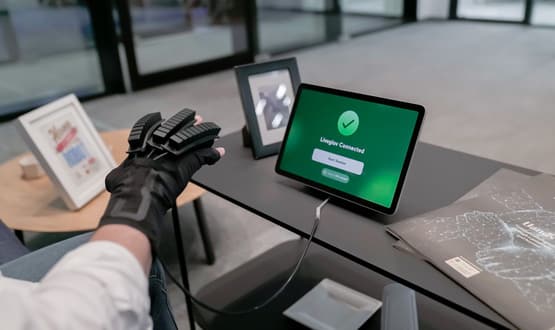Hot stuff
- 25 March 2014

A simple IT solution that enables the delivery of gold standard care for patients time after time is the Holy Grail for those working with NHS technology.
One such solution, an electronic checklist for patients who have suffered a transient ischaemic attack (TIA), has been developed in Essex; and scooped the award for ‘clinical treatment and care’ at the EHI Awards 2013 in association with CGI.
The hyper-acute online TIA (HOT-TIA) referral form automatically calculates a patient’s risk of stroke for GPs, creating a red alert for immediate admission if the patient is at high risk and enabling those at low risk to be seen within seven days.
The aim of the electronic form is to speed up the process of care and cut out the complicated, manual task of assessing risk, while eliminating human error.
In practice the HOT-TIA form has meant previously missed targets for treatment times are now met, patient safety is enhanced, worries over medico-legal concerns for GPs are removed, and the efficiency and effectiveness of the whole process has improved.
Docs and techies together
Behind the project is the familiar winning combination of a clinician with a passion for improving patient care and an IT professional with the right technical know-how.
The project leader is Dr Devesh Sinha, a consultant in stroke medicine at Southend University Hospital NHS Foundation Trust.
In 2010, he was unhappy that National Institute for Health and Clinical Excellence guidelines, recommending that TIA patients at high risk of a stroke were seen within 24 hours, were not being met. In his own trust, only 52% of high risk patients were seen within the target time.
One in eight of those judged high risk will go on to have a stroke within a week if left untreated. So the implications for individuals and the health service as whole were stark.
Dr Sinha says: “The evidence is very strong that those at high risk should be seen within 24 hours. However, what used to happen when a GP saw a patient with a TIA was that they had to fill in two and a half pages of paperwork and then find a secretary to fax it to a secretary on the stroke unit. Often that didn’t happen until the next day or the day after and the golden period had gone.”
Dr Sinha spent several months working on educating practice teams to improve referrals. But, after seeing little change, he decided that technology might be the answer to transforming the service.
Easier, faster
He realised that this could only be achieved with IT expertise, and a partnership with Philip Crofts, then working as senior application manager at NHS Central Eastern Commissioning Support Unit, was to prove pivotal.
Crofts says: “Devesh knew there must be a better way of getting the information to the hospital but didn’t know how it could be done.”
The team began by carrying out a process mapping exercise to identify the bottlenecks in the system. It realised that the paper-based referrals not only had the potential to go missing or to be delayed, but that they were inconsistent in their scoring; with the danger of errors in classification for high risk patients.
They then worked with primary care and hospital clinicians and systems analyst colleagues to develop a better system, supported by the local Stroke Network.
Crofts says the team decided that the system should be intuitive with no need for a training programme for GPs and that a web-based form would best suit the demands of the process. He adds: “It was important that we made it simple enough that nobody needed to be shown how it worked.”
From there, Dr Sinha worked on transferring the referral form with manual risk calculations into an automatic system based on a drop-down box.
Once completed, the information is delivered securely to the email or mobile phone of the stroke team and a member of the team is always available to speak to GPs.
Dr Sinha says the system works so well that patients can now receive a telephone call from the stroke unit before they leave the GP practice.
Also, financially rewarded
Dr Sinha says the electronic checklist offers clear benefits for primary care clinicians and patients: “It obviates the need for GPs to recall the complex formulae and perform tedious calculations and eliminates the risk of error while also freeing them from medico-legal concerns over their diagnosis.
“Automatic calculations also prevent high risk patients being classified as low risk as was possible with the previous paper-based system.”
The beauty of the project was that it also received buy-in from local GPs, who quickly saw the benefits for their patients as well as the benefits of a system that reduced medico-legal risks.
Dr Sinha says an audit done following implementation found the trust is now achieving 100% both for treating high risk patients within 24 hours of local referral and for seeing all low-risk patients within seven days.
The average time to treatment for high risk patients was 18 hours in 2013; compared to 4.2 days in 2010.
The new system also earned the trust the Best Practice Tariff, worth an extra £477 per patient in 2012-13, plus an additional £180 for gold standard treatment of patients within 24 hours.
In addition, the cost saving to the NHS is likely to be considerable with the average first year cost of stroke put at £23,315 by the National Audit Office in 2011.
Widespread interest in a job well done
Not surprisingly, such success has also sparked interest from other trusts. Mid-Essex Hospital NHS Trust has already followed its Southend neighbour in adopting the system and three further trusts have now expressed an interest.
Dr Sinha is a passionate advocate for the system and believes it has the potential to become the new standard for TIA in the NHS because it is cheap to set up, does not require significant project management, and requires only basic computer knowledge.
The team is now working on integrating the form into GP software systems and looking at the possibility of developing an app for the checklist.
For Dr Sinha, though, the ultimate success of the system lies in the foolproof method for seeing the right patient at the right time.
He adds: “As a stroke clinician I no longer have to think ‘I wish I could have seen this patient yesterday’. For me that is the biggest satisfaction.”
And from an IT perspective Crofts added: “It’s the best thing I’ve ever done. I work quite removed from patient care so to do something that means somebody might actually be walking about because of what I’ve done is fantastic.”
Other clinicians and organisations interested in HOT-TIA should contact Central Eastern CSU: ict@centraleasterncsu.nhs.uk

If you have been inspired by the team responsible for the hyper-acute online TIA (HOT-TIA) referral form, and know of a trust, team or company that is taking a similarly innovative approach, why not enter the EHI Awards 2014?
This year’s awards, which will be presented at a black tie dinner in October, have more categories than ever before. There are 14 categories to enter, the details of which can be found on the dedicated awards website. Entries must be received by 9 May.
For information about sponsorship opportunities for the awards or to book tickets, contact EHI’s events team on 0207 785 6924.




